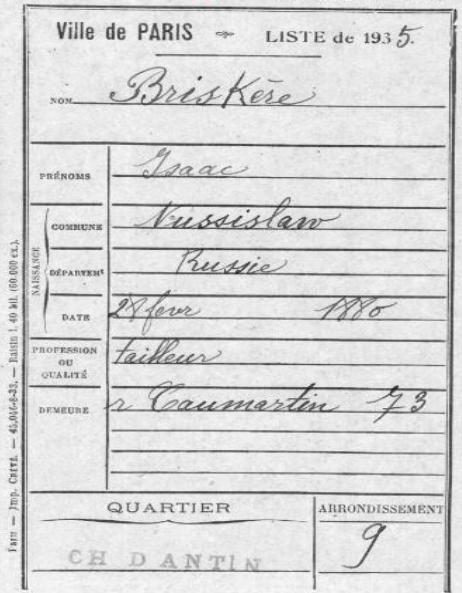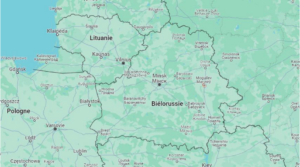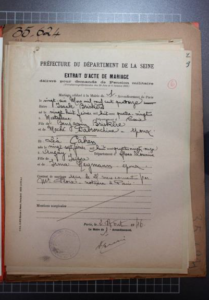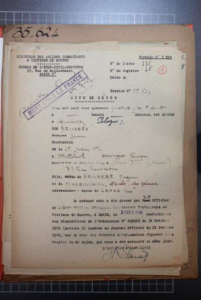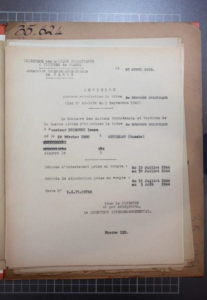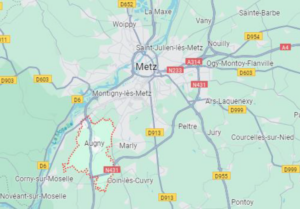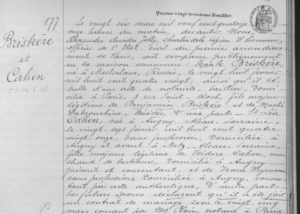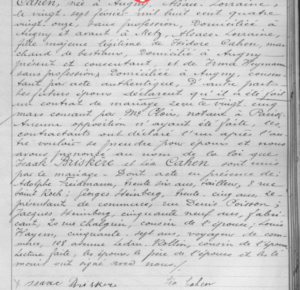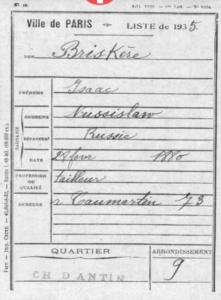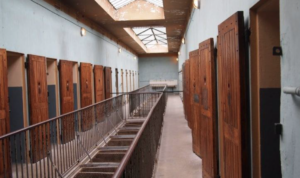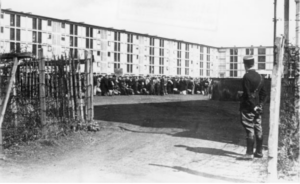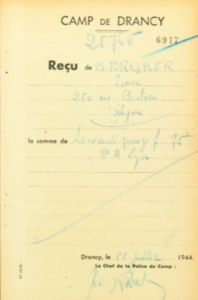Isaak BRISKERE
This project was carried out by the 9th grade students from classes 4 and 5 at Les Blés d’Or secondary school in Bailly-Romainvilliers, in the Seine-et-Marne department of France, under the guidance of their French teacher, Ms. Jorrion, and their History and Geography teacher, Ms. Garilliere. We work with the Convoy 77 nonprofit organization, which aims to bring together the families and friends of the people who were deported on Convoy 77, and anyone with an interest in Holocaust remembrance, as well as contributing to Holocaust research and education. Students from different countries are asked to write the biographies of those deported on Convoy 77, the last large convoy from Drancy. It left on July 31, 1944, bound for Auschwitz, carrying 1306 men, women and children to the death camp. We would like to share with you our biography one of those deportees, Isaak Briskere.
Isaak Briskere’s parents were Benjamin Briskere and Mache Debrouchine. He was born on February 28, 1880 in Metislawl, Russia. We had some difficulty finding this town, but it appears that it is now called Moguilev or Mogilev and is in present day Belarus.
We assume that Isaac lived alone with his parents during his childhood, as we have found no mention of any other family members. Through social networks, however, we found a contact on the Jewish website in Alsace and Lorraine. A possible brother or cousin, Samuel Brisker, was born in 1884 in Metislawl, the same town as Isaac. He was married to Alta Gatul, who was also born there in 1899. They had one son, Anatoliy Brisker, who was born in Leningrad in 1939. All three survived the Holocaust in the former USSR. Anatoliy had a son, Maxim, who currently lives in Florida, whom we have tried to contact, unfortunately without success.
We also assume that Isaac grew up in Russia, and that the reason he moved to Paris was to flee the various problems there, such as the economic crisis and the pogroms, during which Jews were attacked. We do not know when he arrived in France, nor how old he was at the time. We have been unable to find out anything else about his childhood. We assume that he trained as a tailor, as he became an haute couture dressmaker.
Certificate of nationality / Marriage certificate
Death certificate / Deportation record
We assume they met in France, given that she came from Alsace-Lorraine. Léa Cahen was born on February 27, 1891 in Augny, Alsace-Lorraine. Her parents were Isidore and Irma Keymann. They were married in the 1st district of Paris and their marriage certificate states that Isaac’s parents were decease and that Léa’s father was a cattle merchant near Metz, in the Moselle department of France. His wife, like Léa, was not working at the time. Only the father made the trip to Paris for the wedding. There he met up with some cousins, who were witnesses to the wedding: Jacques and Georges Heinberg and Louis Hayen. Adolphe/Abraham Freidmann was a tailor and lived at 8 rue Saint Roch, the same address given by the bride and groom. However, they are not listed at that address in the 1926 or 1931 censuses, and only Adolphe and his family are listed in 1926. The couple signed a prenuptial agreement, which tends to suggest that they owned property.
On March 23, 1927, at the age of 47, he was naturalized as a French citizen under the provisions of article 8.5 of the French Civil Code. This proves that he must have wanted to integrate into French society, either by starting a family or working; he was an haute couture designer. From 1935 onwards, he had a voting card.
Isaac’s first recorded address in Paris was in 1935, when he was 55 years old, and living at 73 rue Caumartin in the 9th district.

You only have to glance at the elegant facade of his Paris apartment to see that he was earning a good living.
During the German occupation in World War II, Isaac and his wife fled to Lyon, where they lived at 250 rue du Boileau. He began working in Augustine Barat’s workshop in September 1941, as she confirmed in a letter in 1949. Her haute couture workshop and boutique were based at 6 rue Auguste Comte and 21 place Bellecour in Lyon
On July 19, 1944, the Gestapo, the Nazi political police, arrested him at work on the grounds that he was a Jew, and took him to the Montluc prison.
The Montluc prison was built in 1921 on the slopes of Fort Mont Luc. The decision to build the prison was taken in 1914, it was commissioned in 1939 and finally closed in 2009. Famous for its role as a detention center during the Second World War, over 10,000 people were held there, including Jean Moulin and Marc Bloch.
He was then transferred to Drancy transit camp on July 24, 1944. Records show that he had 5,400 francs on him at the time, a significant amount of money in those days. A second entry, with the same name but a different spelling, shows that he also had 75 francs. Was he searched twice? He spent a week in the camp and was then deported to Auschwitz on Convoy 77 on July 31, 1944.
The actual journey lasted from July 31 to August 3, 1944.
The deportees were transported in cattle cars, in extremely difficult circumstances, with neither food nor water. Yvette Lévy, who was also aboard this train, recounts the horror of the journey, everyone crammed in together, unable to lie down or even sit down, with no sanitary facilities.
The train finally arrived at Auschwitz. Isaac was 64 years old at the time, and we can assume that he was selected to be sent straight to the gas chambers, where he died.
We know that his wife survived, because after the war, in 1946, she began a search for her husband, as shown by various records including details of her identity and her signature. The records show that by then she had moved to 23 rue de la Py in the 20th district of Paris. Isaac was declared a “non-returnee”. On February 15, 1947, he was declared to have died in Auschwitz on August 5, 1944. In July 1947, the words “died for France” were entered on his death certificate. In 1955, Léa was granted 12,000 francs in compensation for the loss of her husband.


 Français
Français Polski
Polski